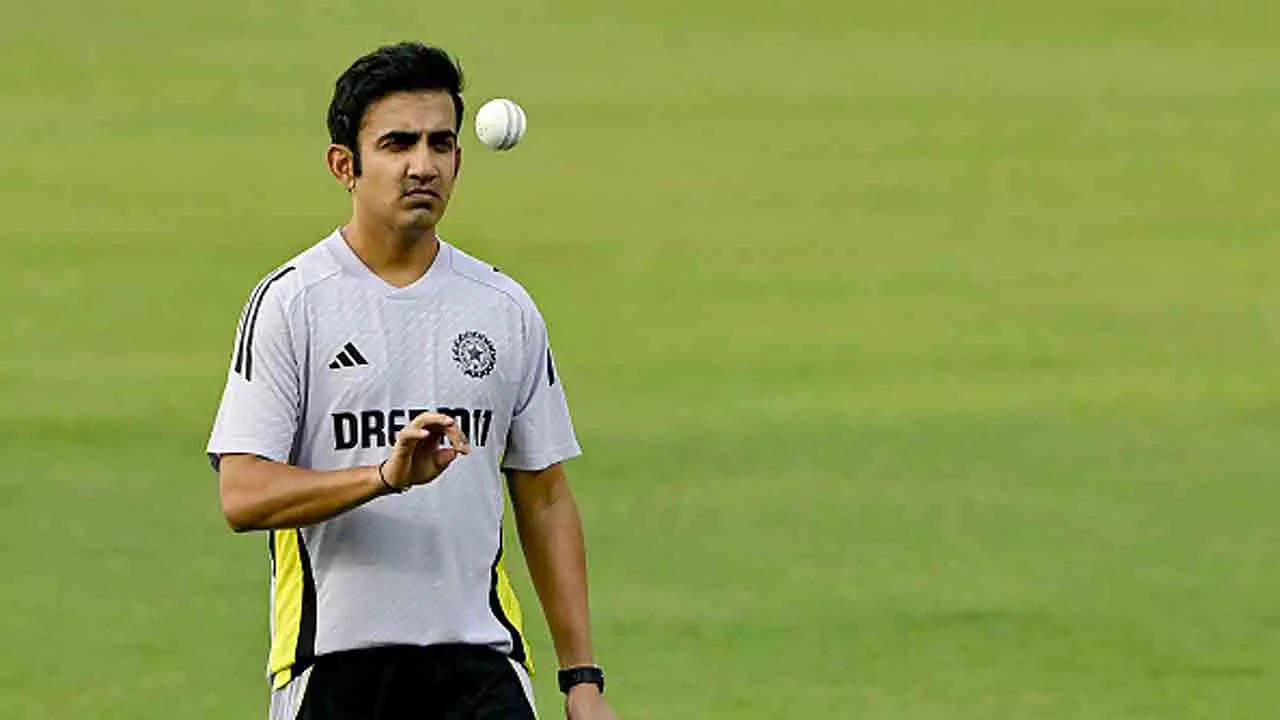Is Gautam Gambhir the Right Man to Lead Team India? A Critical Look at Recent Performance
India's recent cricket performances have left fans and critics alike questioning the team's direction. The appointment of Gautam Gambhir as head coach has coincided with a series of losses, raising concerns about his leadership and strategic decisions. This article delves into the controversies surrounding Gambhir's coaching tenure, examining the team's recent setbacks and analyzing the future prospects of Indian cricket under his guidance. Let's explore the tumultuous journey of Team India under Gambhir's captaincy and investigate whether he is the right choice to lead the squad to future victories.
The Downward Spiral: Analyzing India's Recent Losses
Gambhir's tenure as head coach has been marked by a string of defeats that have shocked fans and experts. The series loss to Sri Lanka, a historic whitewash against New Zealand, and the loss of the Border-Gavaskar Trophy have all fueled intense debates about his capabilities. The unprecedented nature of these setbacks—a first in decades for several of the series—has only intensified the pressure.
The Sri Lanka Series: A Wake-Up Call
The loss to Sri Lanka signaled the start of the downward trend. This unexpected defeat exposed vulnerabilities in the team's approach and strategy, prompting questions about the selection process and game planning under Gambhir's leadership.
The New Zealand Whitewash: A National Humiliation
India's subsequent defeat at the hands of New Zealand at home was a devastating blow to the nation's cricketing pride. The unexpected whitewash shocked the cricket world, leading to widespread criticism of Gambhir's strategies. The manner of the defeats, highlighting a failure across all departments, compounded concerns.
The Border-Gavaskar Trophy: A Decade of Dominance Lost
The loss of the coveted Border-Gavaskar Trophy, India's first in a decade, represents the culmination of a series of disappointing performances. This crushing defeat exposed serious gaps in India's Test match preparation, which must now be addressed. It serves as another marker that significant changes must be considered going forward.
Internal Rifts and Team Dynamics
Reports of internal rifts and disagreements within the team have only worsened the situation. This unsettling climate of discord raises serious doubts about Gambhir's ability to unify the players and maintain a positive and cohesive team environment. Without unity, the prospect of future success dims.
Addressing Internal Conflicts
The focus must now shift toward conflict resolution and the fostering of camaraderie and harmony amongst team members. Without addressing the reported team discord, improvement will be hindered. A strong, supportive atmosphere within the team is a prerequisite for success in highly competitive environments like international cricket.
Impact on Team Morale
It is essential to consider the demoralizing impact of continued defeats on team morale. The mental well-being of the players is paramount, and fostering their confidence must be a crucial aspect of a revitalized coaching strategy. Strategies to repair team unity and individual players' confidence will need to be incorporated into plans moving forward. A team leader must know how to keep the team's morale up. A comprehensive solution must incorporate methods for addressing both external and internal stresses impacting players' moods and performance.
Support for Gambhir: A Voice of Reason?
Amidst the criticism, some, like CAB president Snehasish Ganguly, advocate for patience, pointing to Gambhir's success with KKR. He suggests that Gambhir deserves more time to prove himself and implement his vision for the team. Yet, the continued slide cannot be easily dismissed.
The KKR Success Story
Gambhir's past accomplishments with KKR highlight his capabilities in an arguably different setting. It's critical to note the substantial differences between coaching an IPL team versus leading the Indian national squad. The intensity, scrutiny, and long-term strategy involved differ dramatically between the two levels.
Weighing Past Success Against Present Challenges
While acknowledging his past achievements, it is crucial to analyze whether those skills translate directly to his current responsibilities. There’s an argument for considering his strengths and assessing whether the support structure is appropriate for a turnaround in national team performance.
Looking Ahead: The Path to Redemption
The upcoming T20I series against England is crucial for Gambhir and Team India. A decisive victory could turn the tide and restore confidence, but another string of losses would undoubtedly raise further concerns about his future as the national coach. Gambhir must implement his plan successfully.
The England Series: A Turning Point?
The impending matches offer a critical testing ground. These contests provide a barometer by which the coaching strategy and Gambhir's leadership capabilities can be measured.
A Focus on Fundamentals
Addressing fundamental weaknesses across several key aspects—team cohesion, batting strategy, bowling discipline, and fielding—is vital for Team India’s revival. A comprehensive, cohesive plan addressing these weaknesses and tailored toward a specific win goal will set a clearer pathway for improvement and success.
Mohammed Shami's Return: A Glimmer of Hope?
The return of Mohammed Shami provides a glimmer of hope, but sustained team improvement requires a far more holistic strategy. Although his skills are important, team performance depends on several crucial elements, not one player's skills.
Take Away Points
- India's recent losses highlight crucial strategic and leadership questions surrounding the national cricket team.
- Team unity, player morale, and effective strategy must be priorities to create a pathway for team success.
- While Gautam Gambhir's past success is notable, immediate team success must be measured against his ability to address the urgent problems now facing the Indian team.
- Upcoming matches against England offer a vital testing ground for his leadership and his strategies. Much is at stake.




